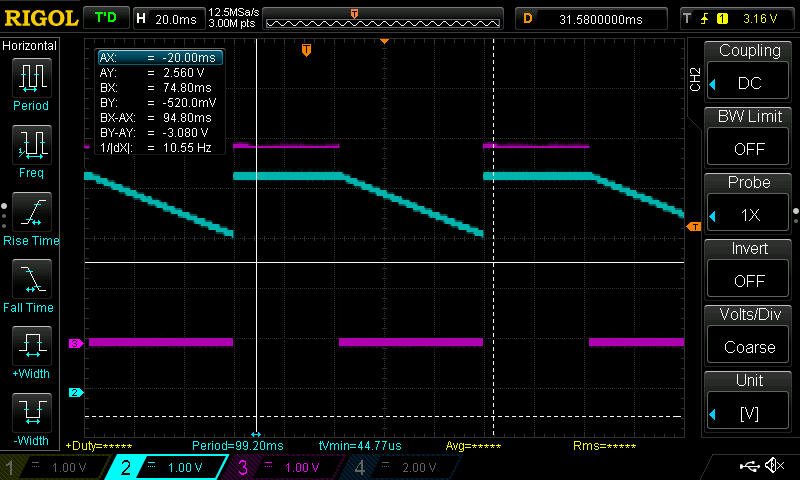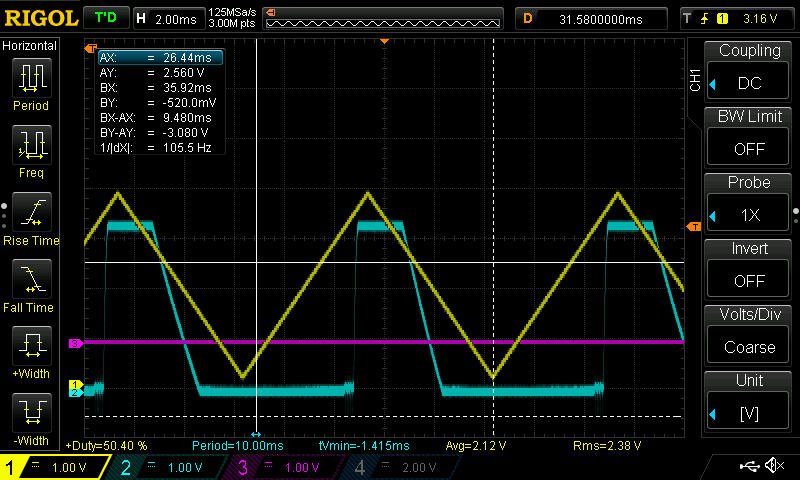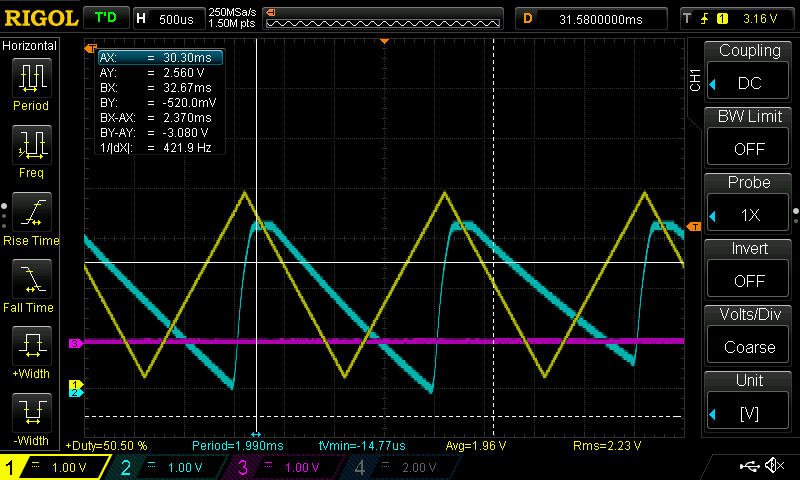Other Parts Discussed in Thread: TLC393
Hi,
I'm using TPS22810 and TLC393 with a constant current source as the main parts of a supercapacitor charge circuit. The goal is to charge with low current, discharge through TPS22810 when TLC393 trigger his ENABLE pin, and charge again while ENABLE is disabled because Vcap is below the target.
I have two problems: comparator seems to work well with very slow input (power supply controlled by hand...) or with some ramp waveform, but not always, and the other problem is Voltage drop on load switch (and overheat) when output current is higher than available (My supply is limited to 100mA, and I try to get 200mA with a load). The following snapshot was taken in this situation:
This is the schematic:





